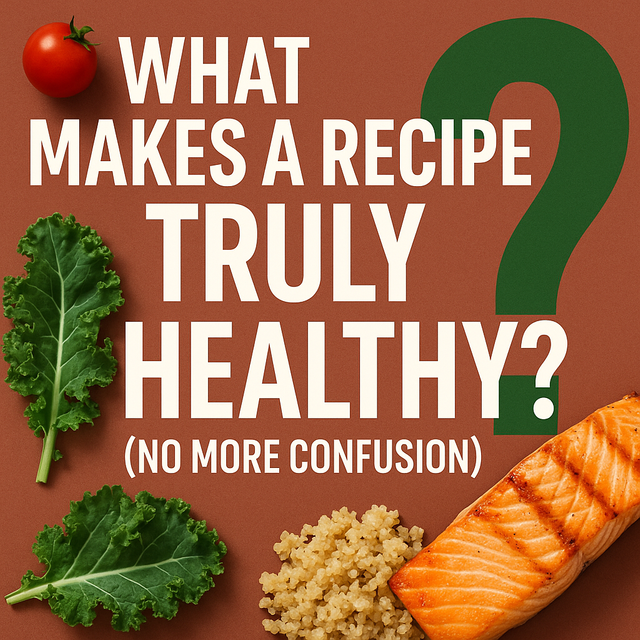What Makes a Recipe Truly Healthy? (No More Confusion)
We’re drowning in "healthy" labels—but what does that actually mean?
Walk down any grocery aisle, and you’ll find "healthy" slapped on everything from sugar-laden granola to frozen dinners with ingredient lists longer than a CVS receipt. As a chef and nutrition researcher, I’ve seen firsthand how marketing obscures the truth about healthy eating. Let’s cut through the noise with science-backed clarity.
What Are Healthy Recipes?
A truly healthy recipe isn’t about trendy labels—it’s built on three pillars:
Whole, minimally processed ingredients
- Think: vegetables, fruits, whole grains, lean proteins, and healthy fats.
- Avoid: refined flours, added sugars, artificial preservatives.
Nutrient density
- Prioritizes vitamins, minerals, fiber, and antioxidants over empty calories.
Balanced macronutrients
- A harmonious mix of protein, complex carbs, and healthy fats to sustain energy.
Example: A quinoa bowl with roasted veggies, chickpeas, and tahini is healthy. A "low-fat" muffin made with refined flour and sugar? Not so much.
Are "Healthy" Foods Really Healthy? The Truth
1. Are "Healthy" Snacks Actually Good for You?
- Many protein bars are just candy bars in disguise (some contain more sugar than a Snickers).
- Veggie chips often have negligible vegetable content—they’re mostly starch and oil.
Better choice: Apple slices with almond butter or roasted chickpeas.
2. Are "Healthy Choice" Frozen Meals Healthy?
While some frozen meals are decent (like those with <500mg sodium and recognizable ingredients), many rely on:
- Excessive sodium (some have 40% of your daily limit in one meal)
- Processed soy protein instead of whole meats
Pro tip: Check labels for sodium and additives like maltodextrin or carrageenan.
What Is the Healthiest Possible Meal?
According to Harvard’s Healthy Eating Plate and the Mediterranean diet (the most researched eating pattern for longevity), an ideal meal includes:
- ½ plate non-starchy vegetables (kale, broccoli, peppers)
- ¼ plate lean protein (salmon, chicken, lentils)
- ¼ plate whole grains or starchy veggies (quinoa, sweet potatoes)
- Healthy fats (avocado, olive oil, nuts)
Example of a "healthiest meal":
- Grilled wild salmon
- Massaged kale salad with lemon-tahini dressing
- Roasted sweet potatoes with rosemary
- Sprinkle of walnuts
How to Spot Truly Healthy Recipes
Ask these questions when evaluating a recipe:
✔ Does it emphasize whole foods? (Not powders, isolates, or "enriched" ingredients.)
✔ Is the sugar content reasonable? (The American Heart Association recommends <25g added sugar/day for women, <36g for men.)
✔ Does it include multiple food groups? (A balance of protein, fiber, and healthy fats keeps you full.)
Red flags:
- "Low-fat" but high in sugar
- Long ingredient lists with unpronounceable additives
- Claims like "guilt-free" or "skinny"—often marketing traps
The Bottom Line
Healthy eating isn’t about perfection—it’s about consistency. A diet rich in whole foods, mindful portions, and variety will always outperform processed "health" products.
